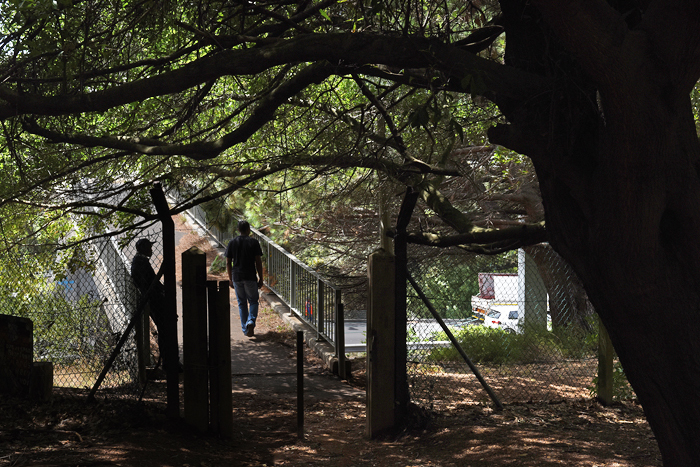UCT graduates develop safety device
08 April 2016 | Story Chido Mbambe. Photo Michael Hammond.
In response to a series of rapes, attacks and murders in the Cape Town area, UCT graduates Rowan Spazzoli, Tsakane Ngoepe and Louis Buys have conceptualised a wearable safety device that will alert security services, the police and others close by when the user is in danger.
“We were sitting having breakfast and an email came through about the most recent Newlands attack. We thought to ourselves, 'There has to be a solution to this. There's no way we have the technology to monitor heart rates, and phones that take high-quality images, but we don't have a tech solution to this.' So we brainstormed and came up with The Guardian,” says Spazzoli.
The AllSafe team envision The Guardian as a wristband that is linked to the user's smartphone. Before going out, you simply pair the device to your phone through their AllSafe app. If you press and hold the single button on the device for two seconds, it sends a discreet alert and your GPS coordinates via your phone to security companies, neighbourhood watch and those who have the app and are within five kilometres.
“The central principle was that it needs to be quick, so you don't have to reach into your pocket to unlock your phone and type in details or call people before you receive help – that's not practical. The second thing was that it needs to reach people that are close by – existing applications only alert predefined contacts, for example, your mom. But your mom is 500 km away and can't do anything about it,” says Spazzoli. “We are trying to prevent the rape before it happens.”
AllSafe plans to sell the device in high-income areas at a margin so that the same device can be provided in low-income areas at cost or even for free if possible. It is estimated that the device will cost the high-income user approximately R600.
“We're aiming to eventually get sponsorship and enough funding to areas where spending up to R600 on a device is not possible. It's not going to just be for the higher class; we're aiming to make it inclusive,” says Spazzoli.
Funding is the biggest obstacle delaying the team from producing the safety device. The team has raised 15% of their prototype target and the AllSafe website urges the community to pre-order as the money generated from pre-orders will speed development. They are also running a crowdfunding initiative, which runs until mid-May. (Find out more about the AllSafe crowdfunding campaign.)
“Government entities won't fund you unless you have a device to show, and it's the same with private investors. Nobody wants to fund you until you have a device and you have started making sales, so that's why we're going the crowdfunding route,” says Spazzoli.
The team would like to get UCT on board and will be meeting with the Sexual Assault Response Team and the Special Executive Task Team next week. Their idea is to roll out a pilot phase on the UCT campus, where devices will be made available to students to use.
“Those using the device will pair it to their phones and it will be linked to their student number, G4S [an independent security company] and the [Campus Protection Services] Control Room at Burnage [Road]. If anything happens, G4S will get an alert,” says Spazzoli. The long-term plan is for every security officer on campus to have the app and to receive notifications of incidents on their phone.
In the pilot phase, devices will be randomly triggered throughout a two-week period. These simulated attacks will assist in monitoring response time. Once enough devices have been produced, they will start rolling them out at each residence.
“As you walk out the door you can sign out a device, put it on, pair it with your phone and then leave. We also potentially will set up points at libraries or the G4S office,” says Spazzoli.
Their vision is to sell the device through major outlets so that lower-income individuals have easy access to it. “Imagine if every Vodacom or MTN outlet could be able to sell the device – that sort of distribution would be great,” says Spazzoli.
“It's going to cost a lot of money and take a lot of time, but if we can save a single incident from happening, it's worth it.”
 This work is licensed under a Creative Commons Attribution-NoDerivatives 4.0 International License.
This work is licensed under a Creative Commons Attribution-NoDerivatives 4.0 International License.
Please view the republishing articles page for more information.










